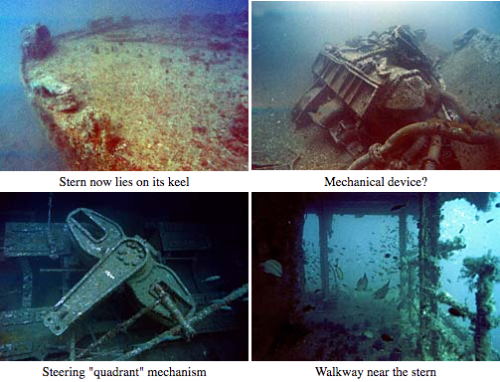When first sunk in 1988, the Aeolus laid intact on its starboard side, much like the Yancey (on its
When first sunk in 1988, the Aeolus laid intact on its starboard side, much like the Yancey (on its port). The bottom of the wreck was at 105 to 110 feet. On a day of reasonable viz, the bright white sides of the Aeolus came up to 50-60 ft and could be easily seen by dive boats as they approached the site. Eventually over time, the wreck settled in the bottom to where the sides were at 70-75 feet. Being intact, the wreck was easy to navigate, but its large size made circumnavigation a “concentrated” effort. The ship “darkened” over the years as marine growth covered the wreck, but the numerous doors and passageways still offered enticing exploration and interest to many divers. It’s intact nature made it popular to many divers because “it looked like a ship”. This all changed in 1996 with the arrival of Hurricane Fran. In an amazing testimony of the power of wind and ocean, the storm took the 446 ft ship which had been sitting in intact, in over 100 feet of water , buried 20+ feet into the sand and started rocking it in the swell. The rocking continued until the entire ship had been torn into 3 major pieces and turned right side up and 90 degrees to where it previously lay. What was once an intact ship had been blasted apart. Today, the Aeolus looks like what more typically looks like a NC wreck. It covers a large area and the parts are scattered, making no “functional” sense as they sit on the ocean bottom. Very easy to get lost in reduced viz. A note, on the 4-6 times I have been on this wreck, it has always struck me as a “dark” wreck. -- source link
Tumblr Blog : web1995.tumblr.com
